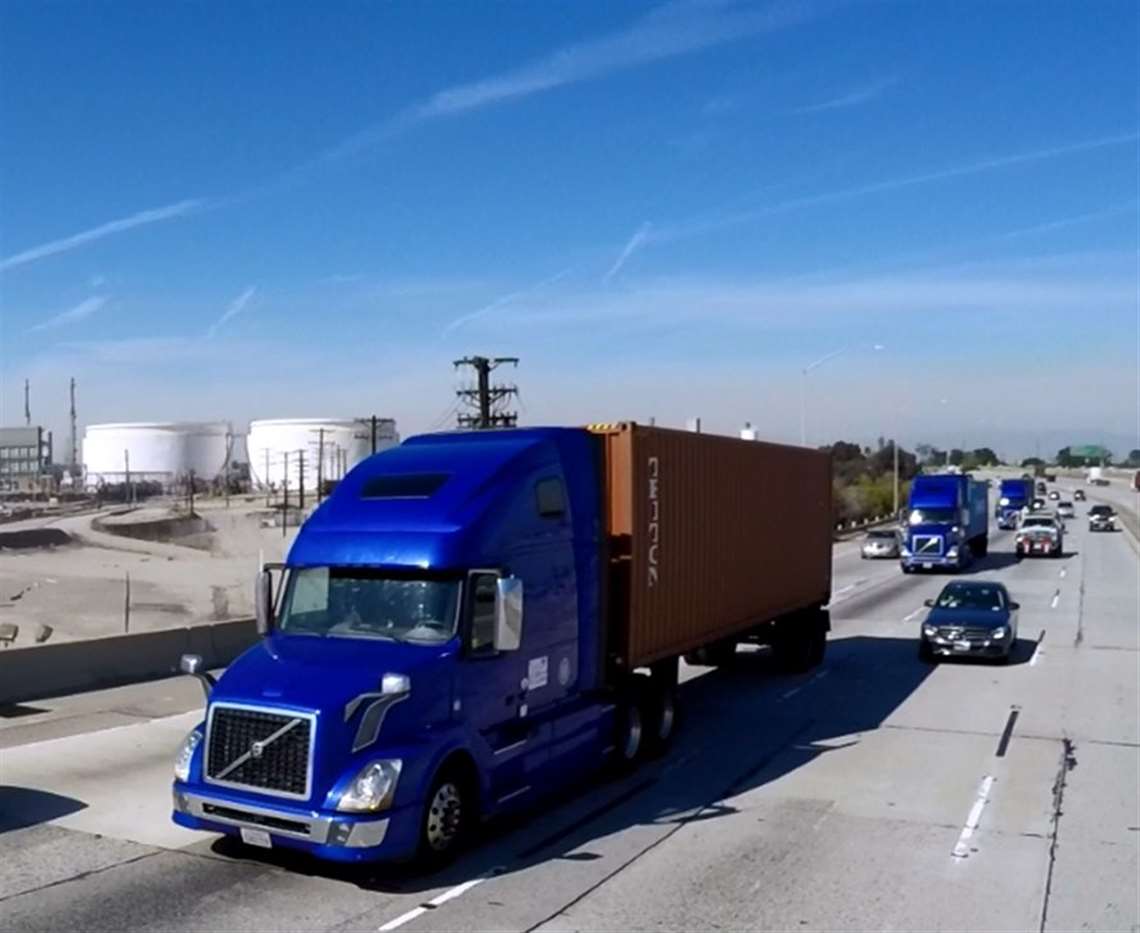Platooning At POLA
13 March 2017

Volvo Trucks and Partners for Advanced Transportation Technology (PATH) at the University of California, Berkeley, announced the recent completion of a successful demonstration of partially automated truck platooning enabled by Cooperative Adaptive Cruise Control (CACC) technology.
Three Volvo VNL 670 model tractors hauled cargo containers at the Port of Los Angeles (POLA) complex and along Interstate 110, which Volvo said highlighted the technology’s potential for improving highway safety, reducing greenhouse gas emissions and increasing the capacity of transportation systems.
“Truck platooning can benefit freight companies and professional drivers alike through safer, more fuel-efficient operations,” said Magnus Koeck, Volvo Trucks vice president of marketing and brand management. “Vehicle-to-vehicle communication is pivotal for platooning systems; it helps reduce the reaction time for braking and enables vehicles to follow closer. Reducing the traveling distance between vehicles not only reduces the aerodynamic drag, but also allows for greater highway utilization, thereby helping to alleviate traffic congestion.”
In simulated “real world” conditions the three Volvo VNL tractors traveled at speeds of 55 mph while keeping 50 ft. apart – a closer distance than usual for on-highway tractors operating in traffic. Forward-looking sensors and vehicle-to-vehicle communication helped maintain speed and spacing without driver intervention. Staged and unplanned vehicle cut-ins demonstrated how the technology handles common traffic situations.
CACC technology is an enhancement to the current Adaptive Cruise Control (ACC) technology that enables closer and more accurate control of the gap between trucks with increased safety. The advanced technology, which makes platooning possible, is meant to serve as an aid, not a replacement for skilled professional truck drivers, Volvo said. Benefits of platooning through CACC include faster responses to hard braking while maintaining safety, superior longitudinal control while following in a lane, reduced emissions, and improved traffic flow.
The CACC technology being developed in conjunction with PATH has been sponsored by the U.S. Dept. of Transportation/Federal Highway Administration Advanced Research Program and Caltrans. Other project partners include Cambridge Systematics, Inc., the Los Angeles County Metropolitan Transportation Authority, and Gateway Cities Council of Governments.
POWER SOURCING GUIDE
The trusted reference and buyer’s guide for 83 years
The original “desktop search engine,” guiding nearly 10,000 users in more than 90 countries it is the primary reference for specifications and details on all the components that go into engine systems.
Visit Now
STAY CONNECTED




Receive the information you need when you need it through our world-leading magazines, newsletters and daily briefings.
CONNECT WITH THE TEAM












